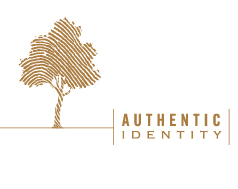We are all familiar with the tourist who, when the native fails to understand, repeats the same phrase louder and more slowly. There is a business equivalent, and it regularly scuppers efforts to implement change.
Almost 70 per cent of all corporate change initiatives fail. One of the key reasons is ineffective communication by leaders. All too often well-intentioned leaders fail to ignite the will to change in their audience, or fail to sustain the flame during the long, frustrating and often scary slog of implementing the change.
Successful leadership rests on the ability to get other people to want to change. It demands much more than skilled delegation or tightly argued business logic.
It’s about enabling them to move from “I know I ought to” to “I really want to”. Only then will they bring all of themselves to the challenge and act like the empowered leaders that you need them to be.
Most of us in business are taught to address resistance to change by appealing to reason and strengthening the logic of our argument. So we double-down on analysis, data-collection, and proof. All of that reinforces the “Ought to”, but it does nothing to address the “Want to”.
To ignite and sustain the will to change – and therefore to get something done – we have to enable people to connect the story they tell themselves about who they are, with the story the business is telling about who they could be. When that happens, people don’t just hear the message; they claim it as their own.
The data-driven business case cannot do this. It speaks the wrong language. People hear, but they are not engaged; they are spectators, not co-creators; they understand, but they are not moved to action; they show up, but they don’t give you their passion and creativity.
The language of rationality, the language of business – facts, analysis, data, and numerical proofs – does not require anything of us except understanding. And understanding alone does not move us to action. So it is insufficient to bring about change.
Story, on the other hand, makes sense of data and leaves space for us to identify, to find ourselves inside the bloodless information. That’s when we find meaning, and that is how we move from “Ought to” to “Want to”.
Take the case of one client we worked with, a professional services firm in the healthcare sector. It had been acquired by a bigger, publicly owned business, and was under pressure to deliver significant revenue growth. Each of the business units, and all of the leadership team, told a different story about what the firm did and what made it different. Each looked at the world through the lens of their business unit or personal specialism, and everyone was working flat-out to maximize the growth of their area. But it wasn’t enough to satisfy the growth targets set by their new parent.
Resentment, anger and exhaustion were the predominant emotions among the leadership team when we interviewed them privately, and several key players told us they were ready to jump ship. They all saw the logic of the business case for growth, they didn’t need any further analysis or data to convince them. But they couldn’t make the move from “Ought to” to “Want to”.
The CEO recognized that they needed to find common meaning – a story that they could all find themselves in, a story that would make coherent and compelling sense of the range of offerings and capabilities that the firm had, a story that would make them one. That meant articulating the difference that the firm was trying to make in the world, and anchoring it in their heritage.
Once we had that story, the business units and individual leaders were able to move beyond their individual interests and start selling bigger more impactful projects that brought all of the firm’s capabilities to bear on their clients’ problems.
When people take ownership of the message, they re-tell the story in their own words, connecting it with their own values and experiences. The message spreads exponentially, its momentum builds and the energy to sustain through the travails of implementation gets generated as people focus more on possibility than pain.
Business as taught and practiced is monolingual. It speaks only reason. But people are bi-lingual. We speak reason and emotion. And we seek meaning, through story. Maybe the key task for business leaders seeking change is to learn to speak this second language.


